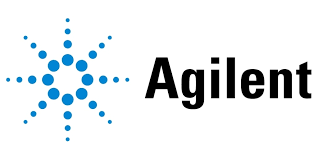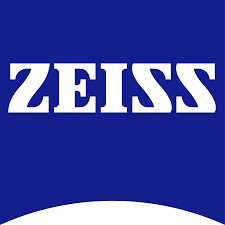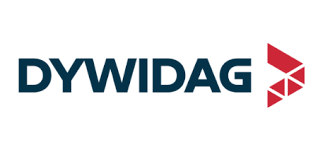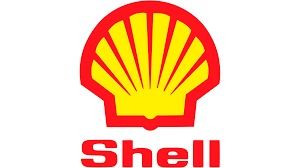Western Blotting Market Report
Published Date: 15 December 2025 | Report Code: western-blotting
Western Blotting Market Size, Share, Industry Trends and Forecast to 2033
This report provides an in-depth analysis of the Western Blotting market, examining key insights, trends, and forecasts from 2023 to 2033, with a focus on market size, regional analysis, and industry leaders.
| Metric | Value |
|---|---|
| Study Period | 2023 - 2033 |
| 2023 Market Size | $750.00 Million |
| CAGR (2023-2033) | 7.2% |
| 2033 Market Size | $1533.09 Million |
| Top Companies | Thermo Fisher Scientific, Bio-Rad Laboratories, GE Healthcare, MilliporeSigma |
| Last Modified Date | 15 December 2025 |
Western Blotting Market Report (2023 - 2033)
Western Blotting Market Overview
Customize Western Blotting Market Report market research report
- ✔ Get in-depth analysis of Western Blotting market size, growth, and forecasts.
- ✔ Understand Western Blotting's regional dynamics and industry-specific trends.
- ✔ Identify potential applications, end-user demand, and growth segments in Western Blotting
What is the Market Size & CAGR of the Western Blotting market in 2023?
Western Blotting Industry Analysis
Western Blotting Market Segmentation and Scope
Tell us your focus area and get a customized research report.
Western Blotting Market Analysis Report by Region
Europe Western Blotting Market Report:
Europe’s Western Blotting market is valued at USD 193.65 million in 2023 and is anticipated to reach USD 395.84 million by 2033. The demand in this region is spurred by stringent regulatory guidelines and an increased focus on developing efficient diagnostic processes.Asia Pacific Western Blotting Market Report:
In 2023, the Asia Pacific region's market is valued at USD 154.58 million and is projected to grow to USD 315.97 million by 2033. Factors contributing to this growth include the increasing number of research institutions, rising healthcare investments, and significant advancements in biotechnology in countries like China and India.North America Western Blotting Market Report:
North America leads the Western Blotting market with a current value of USD 259.88 million, expected to grow to USD 531.22 million by 2033. This growth is driven by high levels of funding for biomedical research, advanced healthcare systems, and a strong presence of major market players.South America Western Blotting Market Report:
The South American market for Western Blotting is valued at USD 49.35 million in 2023, with expectations to reach USD 100.88 million by 2033. The market's growth is attributed to expanding healthcare infrastructure and increasing research funding.Middle East & Africa Western Blotting Market Report:
In 2023, the market in the Middle East and Africa is estimated to be USD 92.55 million, expected to grow to USD 189.18 million by 2033. Factors such as improved laboratory capabilities and rising health awareness drive the market forward.Tell us your focus area and get a customized research report.
Western Blotting Market Analysis By Product Type
Global Western Blotting Market, By Product Type Market Analysis (2023 - 2033)
The by-product type segment includes traditional Western Blotting, high-throughput systems, and semi-dry systems. Traditional Western Blotting remains dominant, currently valued at USD 488.32 million in 2023, forecasted to grow to USD 998.20 million by 2033. High-throughput systems are also gaining traction, valued at USD 199.35 million with an anticipated increase to USD 407.50 million over the same period.
Western Blotting Market Analysis By Application
Global Western Blotting Market, By Application Market Analysis (2023 - 2033)
Key applications of Western Blotting include diagnostics, academic research, and biomedical research. The diagnostics segment continues to grow, influenced by the increasing need for accurate protein detection in disease states, valued at USD 164.03 million in 2023, and expected to reach USD 335.29 million by 2033.
Western Blotting Market Analysis By End User
Global Western Blotting Market, By End-User Market Analysis (2023 - 2033)
End-users include academic institutions, biotechnology companies, pharmaceutical companies, hospitals, and clinics. The academic institutions segment holds a significant market share of 53.89% in 2023, driven by rising research initiatives worldwide.
Western Blotting Market Analysis By Methodology
Global Western Blotting Market, By Methodology Market Analysis (2023 - 2033)
This segment primarily focuses on methodologies such as manual versus automated Western Blotting. Manual systems account for a substantial market share at 81.63%, indicating a continuing reliance on traditional techniques amidst the growing automation trend.
Western Blotting Market Analysis By Product Configuration
Global Western Blotting Market, By Product Configuration Market Analysis (2023 - 2033)
Product configurations are critical in lab settings, with kits and membranes being prominent components. Blotting kits dominate the market at USD 488.32 million in 2023, fortifying their place as essential tools in protein analysis while anticipated to reach USD 998.20 million by 2033.
Western Blotting Market Trends and Future Forecast
Tell us your focus area and get a customized research report.
Global Market Leaders and Top Companies in Western Blotting Industry
Thermo Fisher Scientific:
Leaders in providing innovative solutions for life sciences, Thermo Fisher offers a wide range of reagents and instruments for Western Blotting.Bio-Rad Laboratories:
Known for its comprehensive portfolio in life sciences, Bio-Rad is a major player in Western Blotting with advanced products and technologies.GE Healthcare:
Invested heavily in diagnostic innovation, GE Healthcare develops tools and services that enhance Western Blotting efficiency and accuracy.MilliporeSigma:
A key provider of biomolecular research tools, MilliporeSigma specializes in reagents and consumables used in Western Blotting techniques.We're grateful to work with incredible clients.









FAQs
What is the market size of Western Blotting?
As of 2023, the global Western Blotting market is valued at approximately $750 million with a projected CAGR of 7.2%, indicating significant growth potential through 2033.
What are the key market players or companies in the Western Blotting industry?
Key players in the Western Blotting industry include Thermo Fisher Scientific, Bio-Rad Laboratories, Merck KGaA, GE Healthcare, and Sigma-Aldrich, each contributing to various segments of this growing market.
What are the primary factors driving the growth in the Western Blotting industry?
The growth is primarily driven by advancements in biotechnology, rising investments in research, increasing prevalence of diseases, and the growing demand for diagnostics and personalized medicine across global healthcare sectors.
Which region is the fastest Growing in the Western Blotting market?
The Asia Pacific region is the fastest-growing market for Western Blotting, with market growth expected to increase from approximately $154.58 million in 2023 to $315.97 million by 2033, reflecting a strong CAGR.
Does ConsaInsights provide customized market report data for the Western Blotting industry?
Yes, ConsaInsights offers customized market report data tailored to specific research needs within the Western Blotting industry, ensuring relevant and targeted insights for clients.
What deliverables can I expect from this Western Blotting market research project?
Deliverables include comprehensive market analysis reports, segmentation insights, regional data breakdowns, and tailored recommendations for strategic decision-making in the Western Blotting market.
What are the market trends of Western Blotting?
Key trends include technological advancements in automated systems, growing use in diagnostics and academia, increased adoption of high throughput methods, and a shift towards personalized medicine.
